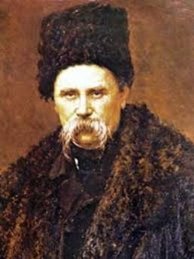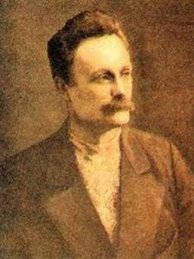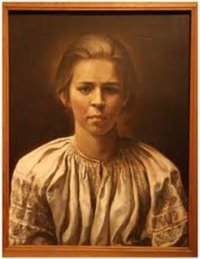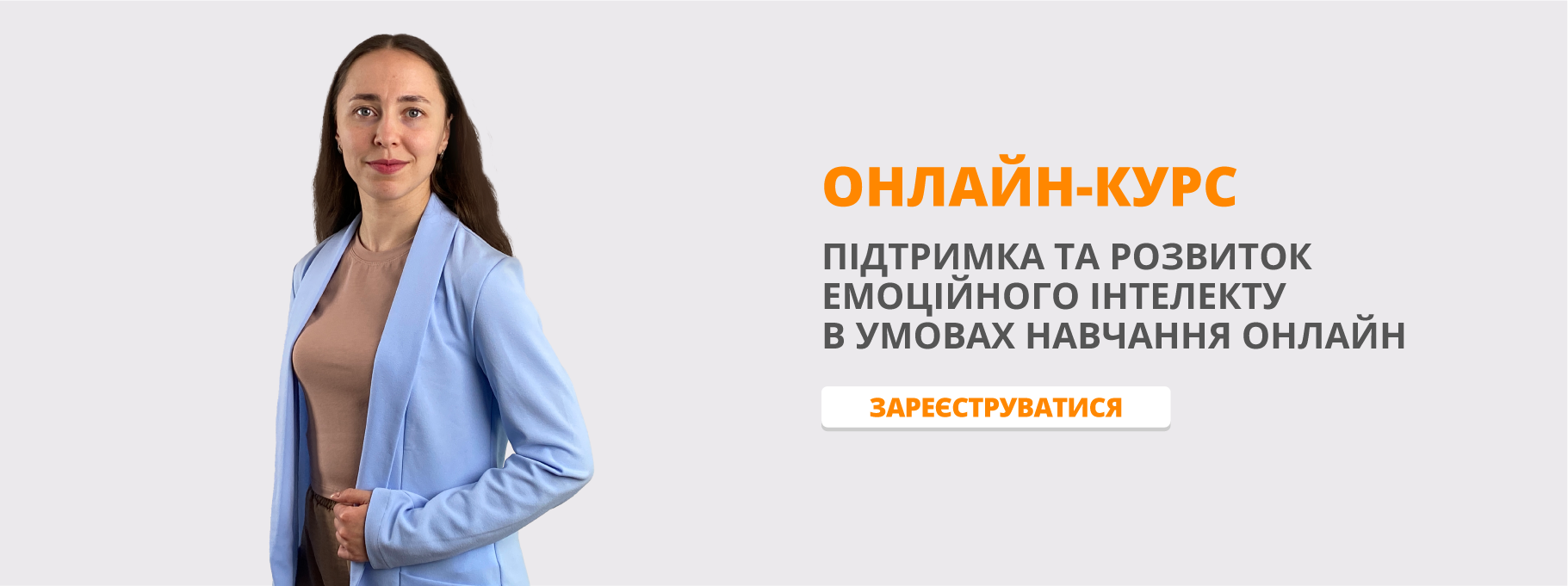T.G.Shevchenko,8 form,Nesvit
Тема уроку: Taras Shevchenko is our famous countryman.
Мета уроку: practical: to practise speaking, reading, listening, mutual decision making and summarizing on the topic, to develop language skills;
developing: to develop anticipation to teach to memory and logical thinking, discover cultural and moral value through varied creative classroom activities;
up-bringing: to increase awareness of every pupil about the life and creativity of Taras Shevchenko
Equipment: computers, discs, textbooks, multimedia, visual ( posters, pictures), a portrait of Taras Shevchenko, pictures of monuments to Taras Shevchenko, presentation about Taras Shevchenko in Power Point, poems and paintings of Taras Shevchenko.
Textbook: Oksana Karpiuk. English. 8 form.
PROCEDURE OF THE LESSON
І. INTRODUCTION.
1. Greeting. Teacher's introduction into the topic.
Teacher. Good morning, students!
( звучить мелодія пісні «Реве та стогне Дніпр широкий» у виконанні народного хору ім. Г.Верьовки.)
На фоні пісні учитель читає вірш Т.Г.Шевченка «Реве та стогне Дніпр широкий» англійською мовою.
The Mighty Dnieper
The mighty Dnieper roars and bellows,
The wind in anger howls and raves,
Down to the ground it bends the willows,
And mountain-high lifts up the waves.
The pale-faced moon picked out this moment
To peek out from behind a cloud,
Like a canoe upon the ocean
It first tips up, and then dips down.
The cocks don't crow to wake the morning,
There's not as yet a sound of man,
The owls in glades call out their warnings,
And ash trees creak and creak again.
The topic of our lesson is really interesting to everyone. Today we shall speak about our famous countryman - Taras Shevchenko.
2.Warming up activities.
Teacher. And now, please, look at the board. This is a portrait of Taras Shevchenko. Tell me who is Taras Shevchenko? (Учні приклеюють «стікери» з надписами жовтого і блакитного кольору біля портрету)
Taras Shevchenko is a famous poet.
Taras Shevchenko is a well-known artist.
Taras Shevchenko is a prominent writer.
Taras Shevchenko is an outstanding literary researcher.
Taras Shevchenko is a noted playwright.
Taras Shevchenko is a glorious public figure.
II. MAIN PART. 1. Listening
a) Pre- listening activity
Introduction of new vocabulary units:
Serfdom( кріпосне право) – A member of the lowest feudal class, attached to the land owned by a lord and required to perform labor in return for certain legal or customary rights; an agricultural laborer under various similar systems, especially in 18th- and 19th-century Russia and eastern Europe.
a workshop (майстерня) – a room or a building in which the work of craftsperson is carried on
to grant (надати) – to give or accord; to agree or to accede
an exile (заслання )– to be away from one's home (i.e. city, state or country), while either being explicitly refused permission to return and/or being threatened with imprisonment or death upon return. It can be a form of punishment and solitude.
to be orphaned (бути сиротою)– to cause to become an orphan
a precentor (регент)– a person who leads a congregation or choir in the sung parts of church services
to apprentice ( віддавати в навчання) – to send someone or go to work for another to learn a trade.
b) While- listening activity. Listen to the text.
Taras Hryhorovych Shevchenko was born in a serf family in the village of Moryntsi of Kyiv Governorate of the Russian Empire (now Cherkasy region) March 9, 1814. Taras Hryhorovych Shevchenko was a Ukrainian poet, artist and humanist. His literary heritage is regarded to be the foundation of modern Ukrainian literature and, to a large extent, the modern Ukrainian language. Shevchenko also wrote in Russian and left many masterpieces as a painter and an illustrator.
Shevchenko was orphaned at the age of eleven. He was taught to read by a village precentor, and loved to draw at every opportunity. Shevchenko went with his Russian aristocrat landlord Pavel Engelhardt to Vilna, 1828–31, and then to Saint Petersburg. There he met the Ukrainian artist Ivan Soshenko, who introduced him to other compatriots such as Yevhen Hrebinka and Vasyl Hryhorovych, and to the Russian painter Alexey Venetsianov. Through these men Shevchenko also met the famous painter and professor Karl Briullov, who donated his portrait of the Russian poet Vasily Zhukovsky as a lottery prize, whose proceeds were used to buy Shevchenko's freedom on May 5, 1838. In the same year Shevchenko was accepted as a student into the Academy of Arts in the workshop of Karl Briullov.
He began writing poetry while he was a serf and in 1840 his first collection of poetry, «Kobzar», was published. Shevchenko also wrote plays. In 1842, he released a part of the tragedy «Mykyta Hayday» and in 1843 he completed the drama «Nazar Stodolya». While residing in Saint Petersburg, Shevchenko made three trips to the regions of modern Ukraine, in 1843, 1845, and 1846.
In 1844, distressed by the condition of Ukrainian regions in the Russian Empire, Shevchenko decided to capture some of his homeland's historical ruins and cultural monuments in an album of etchings, which he called «Picturesque Ukraine».
Shevchenko was sent to prison in Saint Petersburg. He was exiled as a private with the Russian military Orenburg garrison at Orsk, near Orenburg, near the Ural Mountains.
Taras Shevchenko spent the last years of his life working on new poetry, paintings, and engravings, as well as editing his older works. But after his difficult years in exile his final illness proved too much. Shevchenko died in Saint Petersburg on March 10, 1861, the day after his 47th birthday.
c) Post-reading activity
2. Answer the following questions.
1. Why is the name of Taras Shevchenko famous all over the world?
2. What do you know about his parents and childhood?
3. While was he exiled?
4. When did he publish his first poems?
5. Who is the main character of his works?
6. What are the characteristic features of Shevchenko’s poems?
7. What problems did he touch in his works?
d) This list of dates connected with life and heritage of Taras Shevchenko. Your task is to write the events connected with the dates.
May 5, 1838 –
1840 –
1814 –
1845 –
1861 –
1847- 1857 –
a) Shevchenko also met the famous painter and professor Karl Briullov, who donated his portrait of the Russian poet Vasily Zhukovsky as a lottery prize, whose proceeds were used to buy Shevchenko's freedom.
b) Taras Hryhorovych Shevchenko was born in a serf family in the village of Moryntsi of Kyiv Governorate of the Russian Empire (now Cherkasy region).
c) His first collection of poetry, «Kobzar», was published.
d) The Council of the Academy of Arts granted Shevchenko the title of an artist.
e) Shevchenko was arrested along with other members.
f) Shevchenko died in Saint Petersburg, the day after his 47th birthday.
(Key: 1- a; 2- c; 3- b; 4- d; 5- f; 6- e.)
e) Complete the sentences:
was born, Saint Petersburg, «Kobzar», Ukrainian literature, an official member, died
1.Taras Hryhorovych Shevchenko __________in a serf family in the village of Moryntsi.
2. He began writing poetry while he was a serf and in 1840 his first collection of poetry, ___________, was published.
3. Although he probably was not _______________of the Brotherhood, during the search his poem «The Dream» («Son») was found.
4. Shevchenko was sent to prison in___________.
5. Shevchenko_______ in Saint Petersburg on March 10, 1861, the day after his 47th birthday.
6. His works and life are revered by Ukrainians and his impact on_____________ is immense.
( Key: 1 - was born; 2 - «Kobzar»; 3 - an official member; 4 - Saint Petersburg; 5 – died; 6 - Ukrainian literature.)
f) Read and say if the statements are true or false.
1. Taras Hryhorovych Shevchenko was born in a serf family in the village of Moryntsi.
2. Taras Hryhorovych Shevchenko was a Russian poet, artist and humanist.
3. He began writing poetry while he was a serf and in 1870 his first collection of poetry, «Kobzar», was published.
4. While residing in Saint Petersburg, Shevchenko made three trips to the regions of modern Ukraine, in 1843, 1845, and 1846.
5. Shevchenko was sent to prison in Saint Petersburg.
6. Shevchenko died in Orenburg on March 10, 1861, the day after his 47th birthday.
(Key: 1-T; 2-F; 3-F; 4-T; 5-T; 6-F)
g) Read and match the names of the famous writers to the paragraphs about them.



T.H.Shevchenko I.Ya.Franko Lesia Ukrainka
1.A Ukrainian writer, poet, fiction writer,, journalist, and revolutionary leader of the Socialist movement in the Kingdom of Galicia. He was born in August 27, 1856, died: May 28, 1916, burial place of Lviv: Lviv's lychakiv cemetery.
2.In 1842, he released a part of the tragedy «Mykyta Hayday» and in 1843 he completed the drama «Nazar Stodolya». While residing in Saint Petersburg, he made three trips to the regions of modern Ukraine.
3. She was born on the 25th of February 1871 in the town of Novohrad-Volynskyi, Zhytomyr region in an intellectual, "literary" family. Нer father was a lawyer.
h) Complete the sentences with a), b), c) to speak about Taras Shevchenko.
1. Taras Hryhorovych Shevchenko was born in the family of ___________.
a) serf peasants; b) workers; c) artists.
2. His first teacher was __________ who lived in this village.
a) the artist; b) the deacon; c) the priest.
3. ___________, a Russian artist, noticed Shevchenko’s talent and bought him out of serfdom.
a) Pavel Engelhardt; b) Karl Bryullov; c) Vasyl’ Zhukovsky.
4. In 1844 the poet wrote his satirical poem ___________.
a) «Nazar Stodolya»; b) «Haidamaky»; c) «A Dream».
5. His friends helped Shevchenko to return from exile in ________.
a) 1857 b) 1840 c) 1860
(Key: 1-a; 2-a; 3-b; 4-c; 5-а)
- Put the dialogue in the right order.
---- I like to read poems and dramas.
---- Who is your favourite poets?
---- What kind of books do you like to read?
---- Of course, I am.
---- Are you fond of reading?
---- I like many Ukrainian poets. T.H.Shevchenko, I.Ya.Franko, Lesia Ukrainka are among them.
Teacher. And now let's watch your presentation about the life and creative way of our glorious countryman. ( Перегляд презентації)
Teacher. Listen to the poems by Taras Shevchenko translated into English
(звучить мелодія гри на кобзі).
MY TESTAMENT
When I die, let me be buried
In my beloved Ukraine,
My tomb upon a grave-mound high,
Amid the wide-spread plain,
That the fields, the steppe unbounded,
The Dnieper’s plunging shore
My eye could see, my ear could hear
The mighty river roar,
When from Ukraine the Dnieper bears
Into the deep blue sea
The blood of foes… then will I leave
These hills and fertile fields –
I’ll leave them all behind and fly
To the abode of God
To sing His praise… But till that day –
I nothing know of God.
On bury me, then rise ye up
And break your heavy chains
And water with the tyrants’ blood
The freedom you have gained.
And in the great new family,
The family of the free,
With softly-spoken kindly word
Remember also me.
Translated by John Weir
My Thoughts
My thorny thoughts, my thorny thoughts,
You bring me only woe!
Why do you on the paper stand
So sadly row on row?...
Why did the winds not scatter you
Like dust across the steppes?
Why did ill-luck not cradle you
To sleep upon its breast?...
My thoughts, my melancholy thoughts,
My children, tender shoots!
I nursed you, brought you up -- and now
What shall I do with you?...
Go to Ukraine, my homeless waifs!
Your way make to Ukraine
Along back roads like vagabonds,
But I'm doomed here to stay.
There you will find a heart that's true
And words of welcome kind,
There honesty, unvarnished truth
And, maybe, fame you'll find...
So welcome them, my Motherland,
Ukraine, into your home!
Accept my guileless, simple brood
And take them for your own!
St. Petersburg, 1839. Translated by John Weir
Teacher. Now, please, look at the multimedia board and watch video “Ksenya Bilaniuk — Unveiling of Taras Shevchenko Monument, Ottawa, Canada” from YOUTUBE.
3.Reading.
Read the text and translate it into Ukrainian with the help of a dictionary.
TARAS SHEVCHENKO LIVED HERE
There is a small building on Shevchenko by-Street in Kyiv.
The building has a memorial plaque which reads: “In 1846 Taras Shevchenko, the great Ukrainian poet, painter and revolutionary democrat, lived in this house”.
Exploring one room after another, visitor feels that he has travelled back into the 19th century. The walls are covered with drawings and paintings.
Collections of works by T. Shevchenko, which were printed 100 years ago, reviews on his creations, reproductions of his pictures and several lifetime editions of his works are exhibited here. The drawings show us the views of the 19th century Kyiv: the old part of Kyiv with Khreschatyk Street and Podil, the way they looked from the Hills of Pechersk.
We can see here a miniature room with a single small window and a stove in the corner.
“Taras Shevchenko lived here,” says the guide.
A few modest armchairs and a sofa make up nearly all the furniture in the room. There are framed pages of the hand-written “Lileia”, “Mermaid” and other poems which were created here, the early 19th century works by Shakespeare, “Russkaia Starina” almanakh, stories by P. Kulish and others.
The display of the poet’s personal effects includes: the easel, brushes, chisels, rulers, pencils, chalk, an inkpot, a box of drawing instruments, a simple cotton suit and several shirts of rough linen.
People are coming here to pay homage to the immortal poet.
plaque [pla:k] — меморіальна дошка; exploring [iks'plo:ng] — оглядаючи; exhibited [lg'zibitid] — експоновані; miniature ['mmjatja] — мініатюра; effects [Yfekts] — речі; easel fi:zl] — мольберт; chisels ['tjizlz] — різці; to pay homage ['Ііотісіз] — віддати належне
a) Find out in the text “Taras Shevchenko Lived Here” the sentences or parts of them which correspond to the Ukrainian ones given below.
1. На будинку є меморіальна дошка. 2. Тарас Шевченко жив у цьому будинку. 3. Відвідувач відчуває, що він помандрував у 19 століття. 4. Ми можемо бачити єдине маленьке вікно, а в кутку — грубу. 5. Тут ми бачимо збірки творів Т. Шевченка, які були видані 100 років тому. 6. Люди приходять сюди, щоб віддати шану безсмертному поетові.
4. SREAKING. Tell your classmates what you know about Taras Shevchenko. Use the following questions as a plan.
Where is the building situated?
What does the plaque read?
What does the visitor feel when he visits one room after another?
The walls are covered with drawings and paintings, aren’t they? When were the collections of works printed?
What do the drawings show?
What is the furniture in the room?
What does the display of the poet’s personal effects include? Why are people coming here?
6. Teacher. Let’s watch the “ Orest Dubas Interview — Unveiling of Taras Shevchenko Monument, Ottawa, Canada” from YOUTUBE.
ІII. Summary. Our lesson is coming to an end. Well done. I think you have worked a lot. All the students were very active at the lesson and deserve good marks.
IV. Home assignment. To write a letter to Taras Shevchenko.
Використана література:
1.Карп’юк О.Д. Підручник для 8 класу загальноосвітніх навчальних закладів. Рівень стандарту. Тернопіль.: Видавництво «Астон»- 2011.
2. Пошукові системи:
http://www.google.com.ua
http://www.yandex.com.ua


про публікацію авторської розробки
Додати розробку
